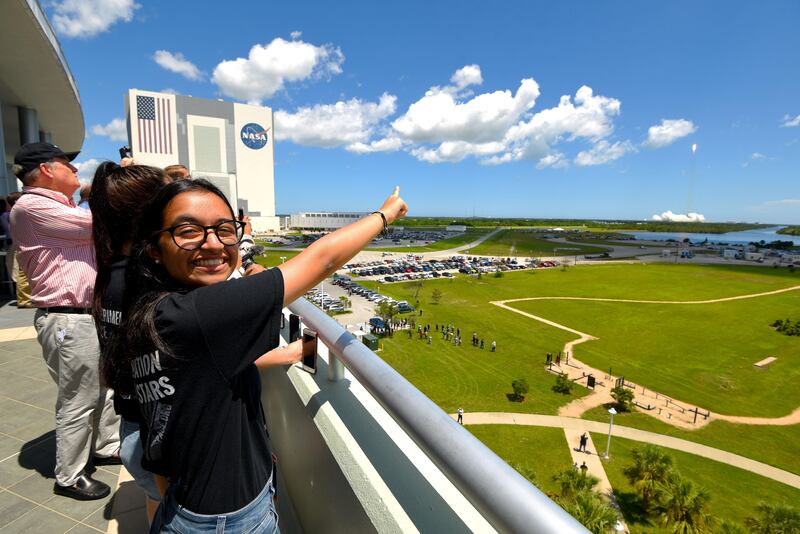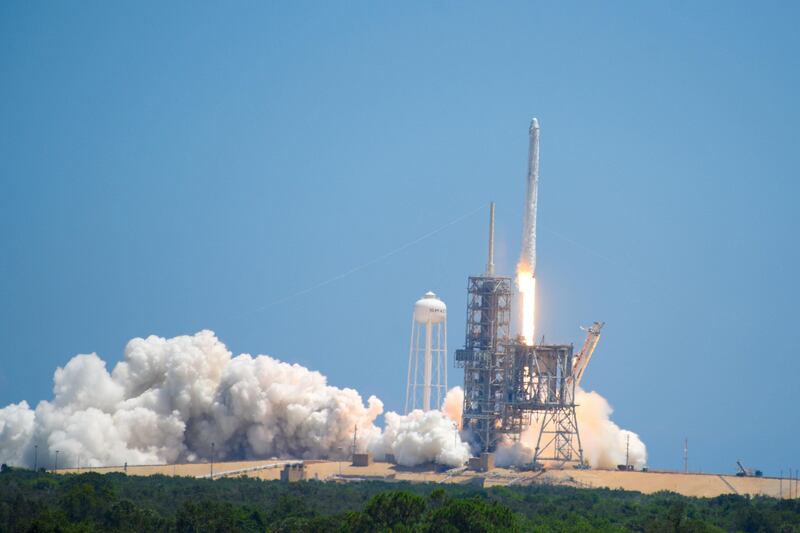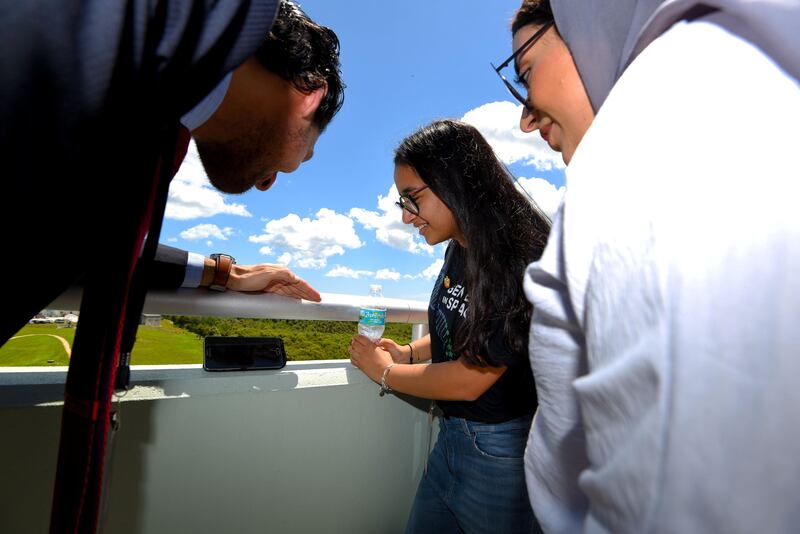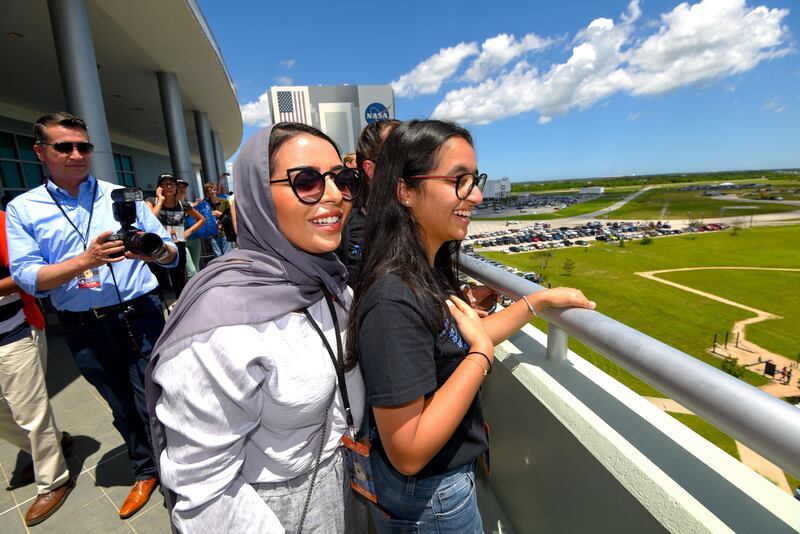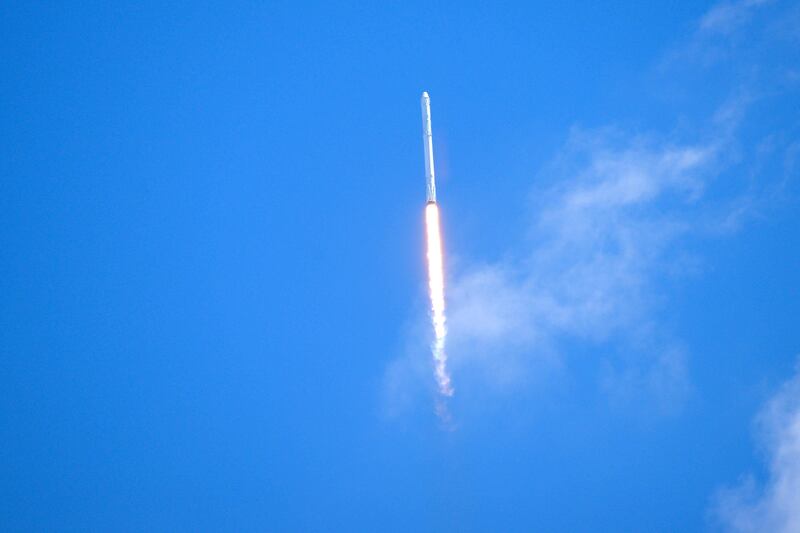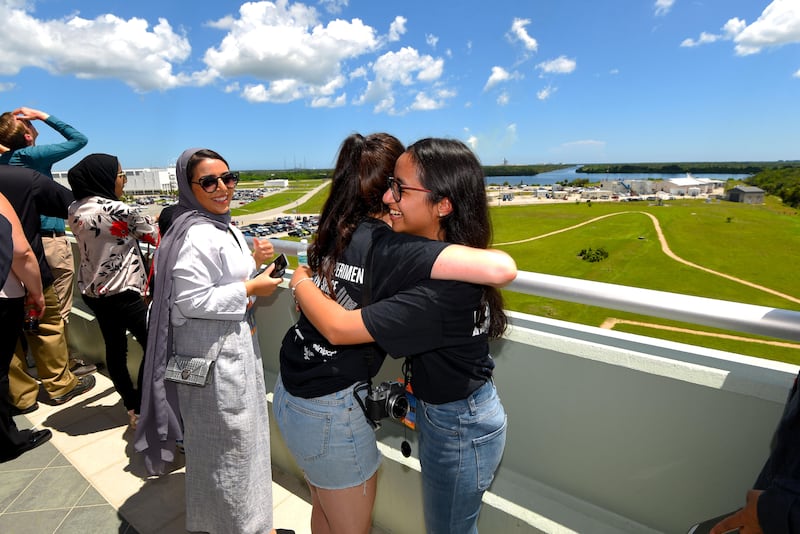First there was a flash of light, followed by a wall of sound, as the Falcon 9 rocket lifted into clear Florida skies, carrying the dreams of Emirati teenager Alia Al Mansoori into space.
Loaded on the Dragon capsule on top of the Space X rocket was her winning experiment in the UAE Genes in Space competition, sponsored by The National, the UAE Space Agency and Boeing.
Watching the Falcon 9 climb into the sky, Alia said: “I literally can’t believe that my experiment is now in space. All the months of effort was worthwhile.”
“The feeling I got when it launched was just so inspiring."
Genes in Space launch
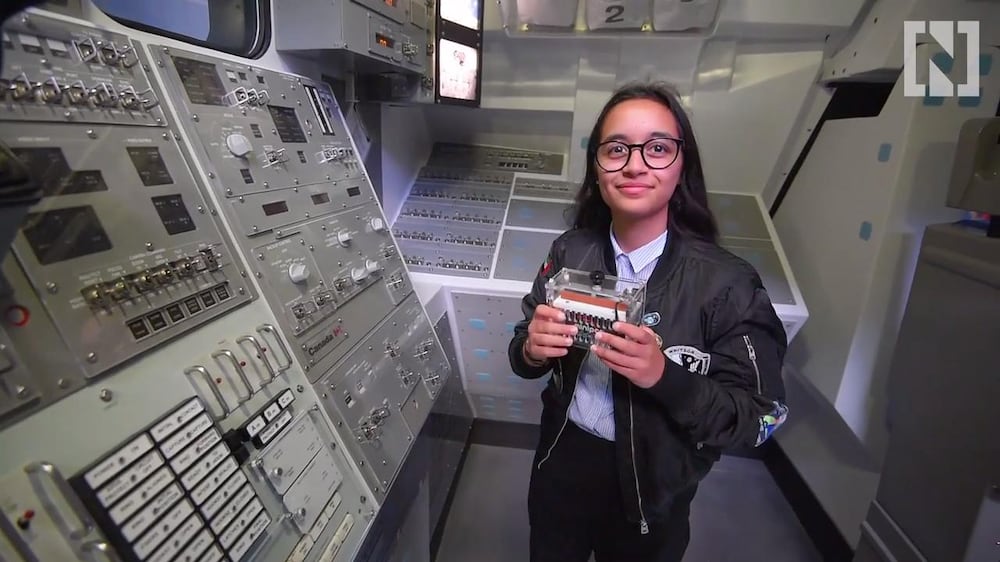
The liftoff of what Nasa calls CRS12, took place at 12.31pm US time as the nine Merlin engines on the rocket ignited simultaneously with 1.7 million pounds of thrust.
It began with the flash of the engines igniting. Seconds later, the sound, travellling two and half miles from the launchpad hit the spectator area, increasing as the Falcon rose higher until everything seemed to shake and vibrate.
Two minutes and 42 seconds, and now travelling around 4,000 mph, the first stage shut down, with the second stage launching the Dragon capsule into a parking orbit around 250 miles above the surface of the Earth - all within 11 minutes of launch.
Eight minutes after launch, the first stage returned to the Kennedy Space Center under its own power, announcing its arrival with another sonic boom and landing on retractable legs.
The Falcon is the first rocket to have this capability which allows it to be reused up to ten times.
__________________
Read more:
Genes in Space winner in Florida to witness her idea take off
Emirati girl wins Genes in Space competition — in pictures
Young Emirati is reaching for the stars as she aims to become UAE's first astronaut
__________________
Now in space, 13 minutes after launch, the Dragon deployed its solar panels and began circling the Earth,
Also watching the launch was Dr Fatima Al Aydaroos from the UAE Space Agency, who said she hoped Alia’s success would encourage other Emiratis to follow the path of science.
Dr Al Aydaroos, Space Science Senior Specialist at the agency, said: “Alia has been a very good role model by doing what is her passion, and I have no doubt she will be an astronaut in the near future.”
Over the next two days, the Dragon capsule will manoeuvre closer to the International Space Station and on Wednesday it will dock with the help of the station's robotic arm.
After unloading, one of two American astronauts are expected to perform Alia’s experiment using samples developed by the pupil with help from Harvard University and carried out on a machine called a miniPCR, which can replicate genetic material and test it under a number of conditions.
The experiment has a number of applications, including researching diseases and also seeing if it is possible to test human genomes in space - something which has never been done before. If successful they will help humans better prepare for the radiation experienced in deep space flight to destinations like Mars - one of Alia’s ambitions
At a date still to be confirmed it will then be returned to Earth on a Dragon where it will be evaluated by the 15-year-old pupil at Al Mawakeb School, and the Harvard team.
In her trip to the US, Alia and her family have seen the historic launchpad where Apollo 11 took off for the Moon, met Chris Ferguson, the commander of the last Space Shuttle mission and seen inside the Boeing workshops where the next generation of spaceships, the Starliner, is being built.
Alia's journey continues after the launch. She has been invited to New York for an interview with the magazine Teen Vogue and will travel to Canada for a meeting with Marc Garneau, the country’s minister of transport, who is a former astronaut and a veteran of three Space Shuttle missions.
